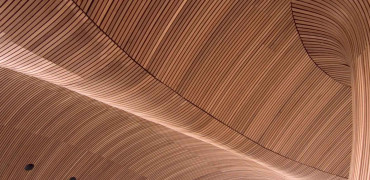With COP26 now behind us, we are more aware than ever of the dramatic and vast changes that lie ahead of us.
Many industries are now forced to reevaluate. It is important to continue forward with the momentum that is driving many new processes in construction.
Both sustainable design, green building principles and circular recycling economy are key to a successful future on planet earth.
There should be little need for construction waste to be sent to landfill
What a waste
The construction industry here in the UK accounts for 295 million tonnes of virgin material each year. The manufacture of cement contributes to greenhouse gasses through the production of carbon dioxide and also through the use of energy, particularly the combustion of fossil fuels.
In the UK it is more likely that a modern concrete structure or building will come to the end of its useful life before the concrete fails due to age.
If a building has to be demolished, it provides a potentially valuable source of aggregate that can be reused for a wide range of applications.
With our growing commitment to recycling waste materials, there should be little need for construction waste to be sent to landfill.
Buildings that can be deconstructed and reused provide not only benefits for the environment but also provide vast quantities of materials that can be reused.
Local innovation and industry can receive a boost along with jobs. Landfill costs are reduced and more importantly the need for more and more virgin materials negated.
Artificial reefs
One unusual use for recycled concrete can be found at the bottom of the ocean!
Many of our reefs, essential for marine life and biodiversity are diminishing due to environmental factors, artificial reefs are a perfect solution.
Artificial reefs create a landscape for marine life that would otherwise be in retreat.
Made from concrete structures, industrial scraps and rubble, artificial reefs are rebuilding from the bottom of the oceans up!
Concrete, out of most waste materials, closely resembles natural reef formations. Firstly the concrete undergoes a deep clean to ensure that pollutants are not introduced into our waters.
Then the materials are carefully placed along the ocean floor and soon after the artificial reefs are covered in sponges, corals, algae. Small sea life and fish are attracted.
The reefs become healthy and progressive. Coastal cities are able to fish and revenue increases. A sustainable and successful recycling concept.
Repurposing old buildings
The cement industry emits approximately 8% of all global emissions of carbon dioxide.
Modular construction offers an opportunity within construction to salvage and reuse materials.
Off-site building processes can create portions of a structure using existing material, these modules can then be assembled on site. Excess materials from one project can be reused on another instead of being discarded.
Over a period of time modular repurposing can decrease not only harmful emissions but also landfill waste.
Crushed concrete and aggregate from foundations and infrastructure can be repurposed. Concrete can also be crushed to make a powder to produce more cement for future projects.
Repurposing old building materials will significantly improve our environmental impact. Many researchers globally are focused on the construction industry and how to make concrete a more sustainable product.
Reusing and recycling is surely a way to make this material less harmful to us all. Sustainable building and architecture has to be our future.
The goal, a net zero building that is not only highly efficient but whose construction comes from 100% renewable resources. We must find a way to reduce, reuse, recycle the value of what we have, the value of what is currently our huge waste!
Kirsty Hammond Editor of Specifier Review




